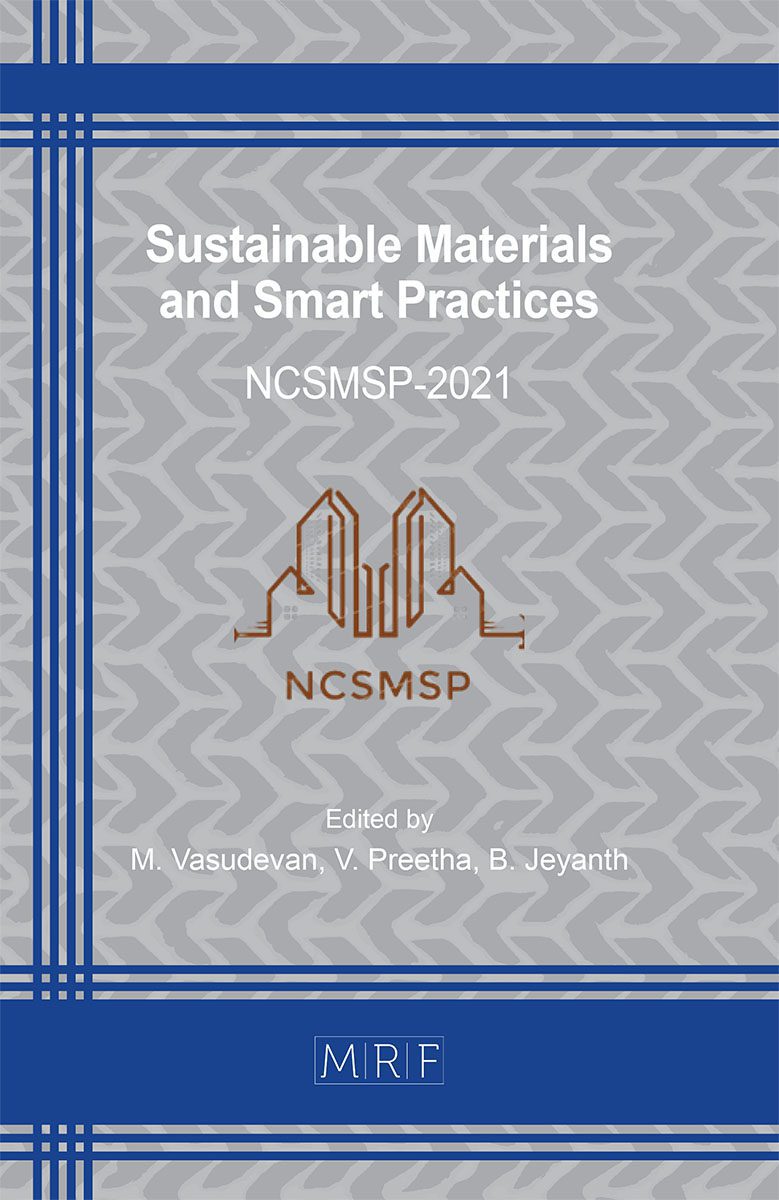Performance Study on Partial Replacement of Bitumen using Waste Polypropylene Cement Bags for Pavement Construction
R. Malathi, R. Geethamani
download PDFAbstract. Flexible pavement is most commonly used in the bituminous material mix. It consists of different binders such as asphalt or bitumen and other minerals are added and compacted and used together in the lower layer of the pavement. Bituminous pavement surface property changes due to varying weather conditions. In hot climatic conditions, the bitumen becomes soft and during cold conditions it becomes too stiff and brittle in nature. In this study, the main concept is to reuse the waste materials and to promote cost-effective solution and reduce environmental pollution. In this project, waste cement bags (polypropylene) are used to replace a portion of bitumen which is used in road construction. Effect of addition of additive materials on the strength of the pavement was evaluated. Previous studies state that polypropylene emits 60ppm less pollution than bitumen while burning. The used cement waste bag when mixed with bitumen improves the behaviour and mechanical properties as per standard specification. In this experimental work, cement bags are shredded into smaller fragments and heated to 90ºC for 30 minutes in a heating mantle till the plastic pieces turned into powder form. On heating, 5 gm of powder was obtained from 20 gm of the used cement bags. This powder was added subsequently to bitumen in 5%, 7%, 9% & 11% for partial replacement of bitumen. Finally, it is inferred that the optimum percentagewas 8.2% without the addition of binders or oxidizing agents, for better efficiency.
Keywords
Waste Polypropylene Bag, Bitumen, Pavement Construction, Conventional Materials
Published online , 12 pages
Copyright © 2022 by the author(s)
Published under license by Materials Research Forum LLC., Millersville PA, USA
Citation: R. Malathi, R. Geethamani, Performance Study on Partial Replacement of Bitumen using Waste Polypropylene Cement Bags for Pavement Construction, Materials Research Proceedings, Vol. 23, pp 432-443, 2022
DOI: https://doi.org/10.21741/9781644901953-47
The article was published as article 47 of the book Sustainable Materials and Smart Practices
![]() Content from this work may be used under the terms of the Creative Commons Attribution 3.0 licence. Any further distribution of this work must maintain attribution to the author(s) and the title of the work, journal citation and DOI.
Content from this work may be used under the terms of the Creative Commons Attribution 3.0 licence. Any further distribution of this work must maintain attribution to the author(s) and the title of the work, journal citation and DOI.
References
[1] ASTM D 1559, Test method for resistance of plastic flow of bituminous mixtures using Marshall Apparatus, American society for testing and materials.
[2] ASTM D 6931, Indirect Tensile (IDT) Strength for bituminous mixtures, American society for testing and materials, 2007.
[3] IS: 1203, Methods for testing tar and bituminous materials: determination of penetration, Bureau of Indian Standards, New Delhi, 1978.
[4] IS: 1205, Methods for testing tar and bituminous materials: determination of softening point, Bureau of Indian Standards, New Delhi,1978
[5] IS: 2386, Methods of test for aggregates for concrete (P – I): Particle size and shape, Bureau of Indian Standards, New Delhi.1963
[6] IS: 2386, Methods of test for aggregates for concrete (P-III): Specific Gravity, Density, Voids, Absorption, Bulking, Bureau of Indian Standards.1963
[7] IS: 2386 (1963), Methods of test for aggregates for concrete (P-IV): Mechanical Properties, Bureau of Indian Standards, New Delhi.1963
[8] K. Sandhiya, L. S. Kumar, K. N. Rajkumar, R. Sandhya, and S. Sukumar, “Partial Replacement of Bitumen by Using Plastic in Bitumen Concrete,” 119 (2018) 2913–2920.
[9] R. Vasudevan, Use of Plastics Waste in Construction of Tar Road.(2004)
[10] A. K. Sahu and R. K. Singh, “Application of Waste Plastic Materials in Road Construction,” no. March, 2016.
[11] Amit Gawandea, G. Zamarea , V.C. Rengea , Saurabh Taydea , G. Bharsakaleb “An overview on Waste Plastic Utilization in Asphalting of Roads.”Journal of Engineering Research and Studies”, 3 (2012) 01-05
[12] A. Johnson, K. Appiah, and V. Nana, “Use of Waste Plastic Materials for Road Construction in Ghana,” Case Studies in Construction Materials, 2016.
[13] J. Patil, A. Pune, S. D. Khandekar, S. Technical, and E. Society, “Application of Waste Plastic as an Effective Construction Application of Waste Plastic as an Effective Construction, 02 (2015)
[14] S. S.Verma., Roads from plastic waste, Science Tech Entrepreneur, The Indian Concrete Journal,(2008) 43 – 44.
[15] A. H. Mir, “Use of Plastic Waste in Pavement Construction : An Example of Creative Waste management,” 05 (2015) 57–67.
[16] Ahmed Trimbakwala “Use of waste plastics in road construction” International Journal of Scientific and Research Publications, 7(2017) 137
[17] V. Swami and A. Jirge, “Use of waste plastic in construction of bituminous road,” International Journal of Innovative Research in Science, Engineering and Technology” 4 (2012) 2351–2355.
[18] B. Aforla, “Assessment of Suitability of Plastic Waste in Bituminous Pavement Construction,” 7 (2015) 1–6.
[19] S. Rajasekaran, Reuse of Waste Plastics Coated Aggregates-Bitumen Mix Composite for Road Application. Green Method. (2011)
[20] D. Kumar, “A Proposed Design of Flexible Pavement using Waste Plastic,” (2014)21–26.
[21] V.S. Punith., Study of the Effect of Plastic Modifier on Bituminous Mix Properties.(2001)
[22] SavitaDevi. Partial replacement of bitumen by using plastic waste in bitumen concrete 3 (2016).































